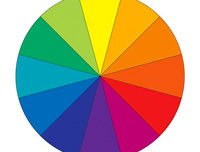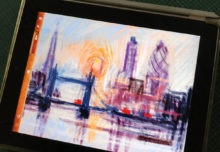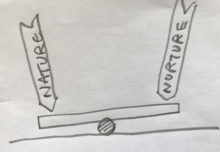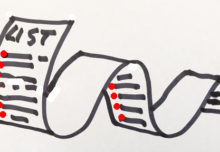PUBLISHING OPEN or LIMITED EDITIONS
Makers of most products relish the prospect of sales volume, and do not paint themselves into a corner before they start. But when an artist or art publisher creates an edition of prints they decide whether they will deliberately limit the number of prints or not. Will this print be published as an open edition or a limited edition?
The pressure to make this choice is rather weird and unusual.
The history of printmaking technology provides a clue as to why.

QUALITY.
Fine art prints became a commercial product a couple of centuries ago. Early prints were made cutting into wood-blocks or soft metal plates that deteriorated in sharpness as they got used. So numbering the print, in sequence of being printed, provided a clue to everyone, including prospective purchasers, about the quality. A lower number was earlier in the run and therefore better than a higher number.
It is easy to understand why the artist might assess quality as the print run proceeds. And why the artist might halt the print run when the quality has dropped below standard. And why the print blocks or plates are then destroyed. The presumption is that the artist makes a choice about the unacceptable quality of later, higher number, prints in the sequence. Therefore the run is ‘limited’ to prevent this.
But, woodblocks, lino-cuts, etchings, engravings all vary in their strength and ability to maintain quality. Also some images will be complex and detailed while others not. Some images will last much longer than others, and the total number will vary according to the printing method and detail of the particular image.
So that doesn’t explain why the print maker deliberately limits the print run ‘in advance’.
TECHNOLOGY.
To confound the argument, in 1796 Senefelder invented lithography and colour litho in 1818. Early lithography used flat stone slabs and made prints without deteriorating damage to the surface. Those prints did not get worse as the run proceeded. Modern offset lithographs can print consistent quality in runs of hundreds of thousands.
When silk-screen fine art prints came along in the early 20th century the position became more confused. And at the end of the 20th century inkjet printing ended the debate. The quality of lithos, silkscreens and inkjets can be the same all through the run.
And yet publishers still choose to create ‘limited editions’.
The usual predetermined edition totals seem to be consistent right across the board. Small editions of etchings and engravings etc are commonly just 10 or 25. Middle size silkscreen editions seem to be around 75 or 100. Larger editions of lithographs can go right up to 1750 or even more. And they are still published as ‘limited editions’.
So it is obviously a marketing ploy to decide in advance what the total print run will be set at.
TAX and STATUS
The status achieved by calling a print a ‘Limited Edition’ might be influenced by this story. The actual truth and veracity of the facts is not actually important. They may be right or wrong.
Between 1940 and 1973, when the UK adopted VAT as the main way of taxing sales, the old tax was called ‘Purchase Tax’. The purchase tax rate on luxury goods was 33%. Prints were seen as a luxury item and were taxed at 33%.
However, original paintings were designated differently. They attracted no purchase tax at all. Tax free sales! So the makers of hand made original prints argued that their artwork should be classified as original art. Their argument was successful and prints with runs of 75 or less were un-taxed. Prints with runs over 75 attracted a 33% tax.
Limiting an edition so that it could be sold tax-free was financially attractive. To achieve the ‘limited edition’ and ‘original print’ status was important. The ‘75’ threshold is an echo of that distinction.
PUBLISHING ETHICS
In the UK The Fine Art Trade Guild has determined the ethical aspects of fine art publishing. The Guild ruled that an edition called a ‘limited edition’ must be the only edition of that image. No further editions should follow when the edition limit is reached.
This has upset many publishers. Some want to re-print a successful popular image with subsequent editions. Some resorted to creating several ‘limited’ editions based on geography. A so-called American Edition, plus a European Edition, plus an Eastern Edition. So for instance, each edition might be numbered out of 250 but the total is 750. So prospective buyers think that their print is more rare than it really is. They are more likely to buy, and they are willing to pay more.
Another common practice is to follow a ‘Limited Edition’ with a subsequent un-numbered open edition. The Guild argued that collectors that have bought a limited edition probably assume that the edition is the only edition. But institutions like the Tate Gallery disagree. The Tate publish and sell posters showing images on show in the galleries. These images by established artists might include exhibits that were originally printed as ‘Limited Editions’.
The Guild has more recently adjusted its stance and softened the previous rigid approach. If an edition is published as a limited edition it is agreed that other use of the image can be used if it is for the purposes of publicity or promotion. Another agreement says that if further use of the image is stipulated on Certificates of Authenticity that accompany the publication then other use can be legitimate.
LATER and LATEST ALTERNATIVES.
Advances in printmaking technology since inkjet printing have allowed prints to be printed on demand. An image can also be available in several size or substrate versions in the same edition. This has further confused the art market.
An alternative for the publisher is to number the prints but without a designated limiter. This has the advantage of telling prospective buyers that each print is uniquely catalogued. If the publisher is also the artist then he or she can sign and number the prints, keep a record of numbers and other details, and ensure quality.
So these are ‘Signed and Numbered’ editions.
CONCLUSION.
The decision about whether a print is a ‘Limited Edition’ or an ‘Open Edition’ is an over-simplified dichotomy.
We have seen that describing a print as a ‘limited edition’ is justified if it is genuinely limited and subsequently unpublished and the matrix destroyed as a quality issue.
However that justification only applies to a small percentage of published prints.
If the print has been created using litho, silkscreen or inkjet then the quality issue is irrelevant.
And the decision to call an edition ‘limited’ is influenced by marketing where rarity status is an important factor.
Here at ArtPublish.com we have examples of ‘Limited Editions’ and examples of ‘Signed and Numbered Editions’.
So, sometimes a ‘Signed and Numbered’ print will be rarer than a ‘Limited Edition’ print. It all depends on the popularity of the image.




